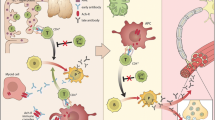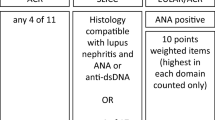Abstract
In order to evaluate all the important limbs of the immune system in the same patient population with rheumatic fever (RF) and rheumatic heart disease (RHD) cellular and humoral immune parameters as well as the immunogenetic profile in 265 North Indian patients with RHD were evaluated. They were studied for class in HLA antigens and 165 of them were also evaluated for the class II (DR locus) antigen profile. Data obtained was compared with 400 and 134 healthy controls respectively of the same ethnicity. Humoral immune parameters (Serum immunoglobulins IgG, IgA; Serum complement fractions C3, C4, C3d; circulating immune complexes and B lymphocyte numbers) and cellular immune parameters (total leucocyte and lymphocyte counts; T lymphocyte sub-populations-CD4, CD8 counts; lymphocyte migration inhibition to an extracellular streptococcal antigen, streptolysin ’O’) were studied in 23 patients with RF, 21 patients with “inactive” RHD and 20 normal controls. Patients of RHD were noted to have an increased frequency of DR3 (P < 0.001; Relative risk = 2.3) and a decreased frequency of DR2 (P < 0.001; Relative risk = 0.3) as compared to the controls. Patients of RF had evidence of an altered regulatory T cell function (Increased CD4/CD8 ratio) and decreased cell mediated immunity to streptolysin ‘0’. An increased humoral immune response (increased B cell counts, elevated serum IgG, circulating immune complexes and C3d) was noted in patients of RF as well as “inactive” RHD. An integrated pathogenetic model with immune response associated antigens of the DR locus influencing selection of cardiac cross-reactive antigens by the antigen processing macrophages, an altered regulatory T cell function with decreased suppressor T cell activity leading to an abnormal immune response is proposed to explain the pathogenesis of RF.
Similar content being viewed by others
References
Reddy KS, Rao PS, Bhatia ML. Immunopathogenesis of rheumatic fever and rheu matic heart disease. Current concepts.Indian J Pediatr 1982; 49: 849–862.
Read S, Zabriskie JB. Immunologic concepts in rheumatic fever. In: Zabriskie JB, ed.Clinical Immunology of the Heart. New York, John Wiley and Sons, 1981; 51–88.
Ad hoc committee on rheumatic fever and bacterial endocarditis of the American Heart Association. Jones criteria (revised) for guidance in the diagnosis of rheumatic fever.Circulation 1965; 32: 664–669.
Rotta J, Sharma KB, Biorca R, Havlicek J.Manual of reference procedures in streptococcal bacteriology and serology. New Delhi: World Health Organisation (South-East Asia Region), 1976.
Terasaki PI, McClelland JD. Microdroplet assay of human serum cytotoxins.Nature 1964; 204: 1998–1000.
Danilovs AA, Ayoub G, Terasaki PI. B lymphocyte isolation by Thrombin-nylon wool. In: Terasaki PI (ed.)Histocompatibility testing 1980. Los Angeles : UCLA Tissue Typing Laboratory, 1980.
Svejgaard A, Platz P, Ryder LO et al. HLA and disease associations — a survey.Transplant Rev 1975; 22: 3–43.
Gray ED, Wannamaker LW, Ayoub EM et al. Cellular immune responses to extra cellular streptococcal products in rheumatic heart disease.J Clin Invest 1981; 68: 665–671.
Gupta RC, Badhwar AK, Berrios X, Bisno AI. C-Reactive protein, streptolysin ‘O’ antibodies in immune complexes isolated from sera of patients with acute rheumatic fever (abstr.)Arthritis Rheum 1986; 29 (4) suppl: 530, S30.
Falk JA, Fleischmann JL, Zabriskie JB, Falk RE. A study of HLA antigen phenotype in rheumatic fever and rheumatic heart diseases.J Rheumatol 1975; 2: 319–322.
Filice GA, Wingo PA. HLA antigen in Europeans and Maoris.J Rheumatol 1976; 3: 437.
Leirisalo M, Laitinen O, Tiilikinen A. HLA phenotypes in patients with rheumatic fever, rheumatic heart diseases and yearsinia arthritis.J Rheumatol 1977; 4 suppl 3: 78–83.
Leirisalo M, Koiruranta P, Laitinen O. Rheumatic fever and its sequelae in children — A follow up study with HLA.J Rheumatol 1980; 21: 506–510.
Murray MC, Montkeil MM, Persollin RM. A study of HLA antigens in adults with acute rheumatic fever.Arthritis Rheum 1978; 21: 6, 652–656.
Ward C, Gelsthorpe K, Doughty RW. A relation between HLA antigens and clinicat features in patients with valvular heart disease.Br Med J 1976; 1: 1499–1501.
Ward C, Gelsthorpe K, Doughty RW, Jardostu CA. HLA antigens and acquired heart disease.Tissue Antigens 1976; 7: 227–231.
Editorial. New views on HLA and disease.Lancet 1985; 1 ; 559–561.
Dos Reis Ga, Barcinski MA. The role of macrophage dependent selection in the induction phase of streptococcal carditis.Lancet 1980; 2: 777–779.
Dos Reis GA Gasper MIC, Barcinksi MA. Immune recognition in the streptococcal carditis of mice: the role of macrophages in the generation of heart-reactive lymphocytes.J Immunol 1982; 128 : 1514–1521.
Raizada V, Williams Jr RC, Chopra P. Tissue distribution of lymphocytes in rheumatic heart valves as defined by monoclonal anti-T cell antibodies.Am J Med 1983; 74: 90–96.
Husby G, Arora R, Williams RC et al. Immunoflouroscence studies of florid rheumatic Aschoff lesions.Arthritis Rheum 1986; 29: 207–211.
Marboe CC, Knowles DM, Weiss MB, Fenoglio JJ. Monocolonal antibody identification of mononuclear cells in endomyocardial biopsy specimens from a patient with rheumatic carditis.Hum Pathol 1985; 16: 332–338.
Willams RC Jr, Raizada V, Prakash K et al. Changes in T lymphocyte subsets during acute rheumatic fever.J Clin Immunol 1982; 2: 166–172.
Ilonen J, Surcel HM, Mustonen A et al. Lymphocyte sub-populations at the onset of Type-I (insulin dependent) diabetes.Diabetologia 1984; 27: 106–108.
Author information
Authors and Affiliations
Rights and permissions
About this article
Cite this article
Reddy, K.S., Narula, J., Bhatia, R. et al. Immunologic and immunogenetic studies in rheumatic fever and rheumatic heart disease. Indian J Pediatr 57, 693–700 (1990). https://doi.org/10.1007/BF02728716
Issue Date:
DOI: https://doi.org/10.1007/BF02728716




